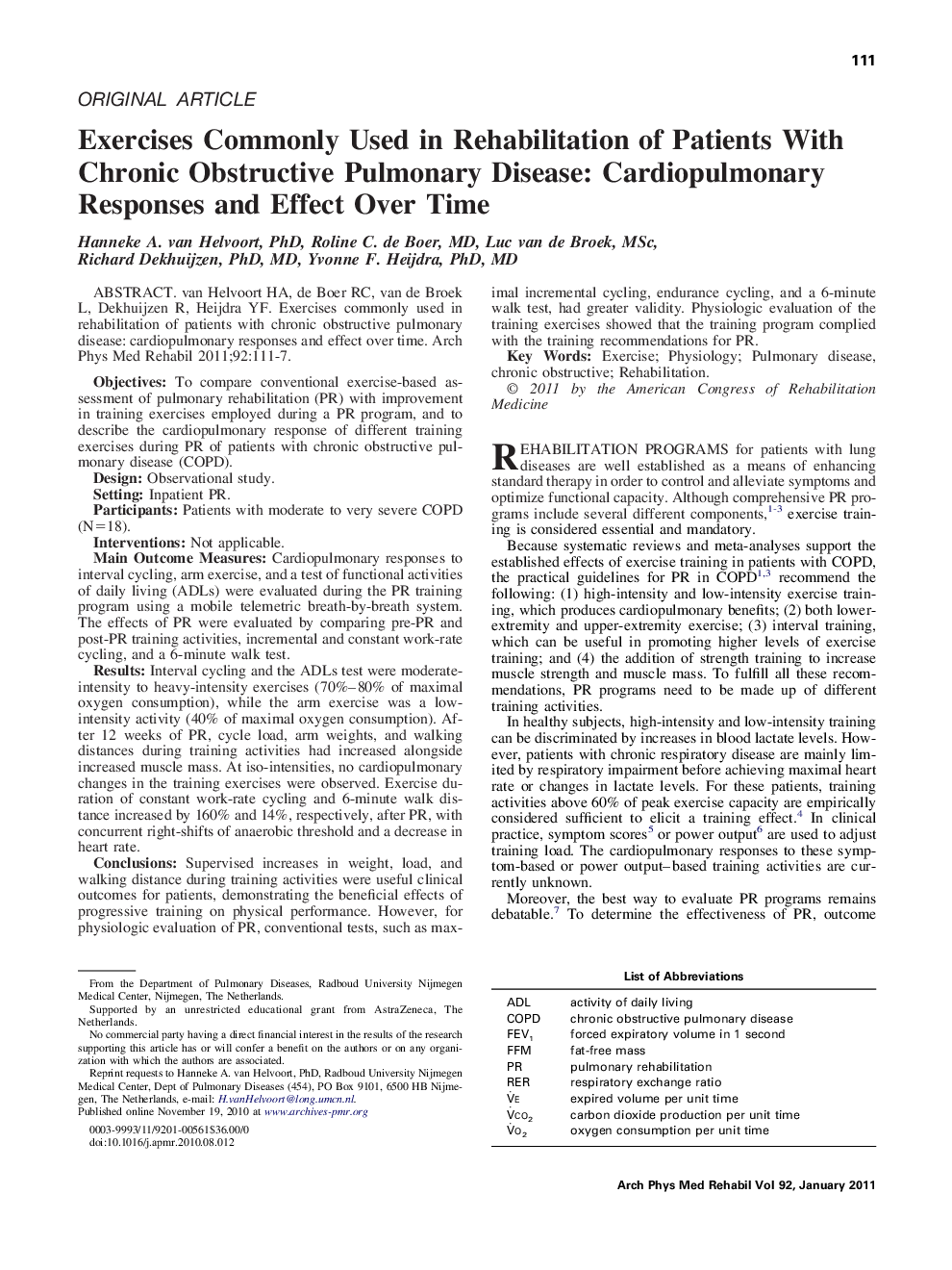| کد مقاله | کد نشریه | سال انتشار | مقاله انگلیسی | نسخه تمام متن |
|---|---|---|---|---|
| 3450642 | 1595744 | 2011 | 7 صفحه PDF | دانلود رایگان |

van Helvoort HA, de Boer RC, van de Broek L, Dekhuijzen R, Heijdra YF. Exercises commonly used in rehabilitation of patients with chronic obstructive pulmonary disease: cardiopulmonary responses and effect over time.ObjectivesTo compare conventional exercise-based assessment of pulmonary rehabilitation (PR) with improvement in training exercises employed during a PR program, and to describe the cardiopulmonary response of different training exercises during PR of patients with chronic obstructive pulmonary disease (COPD).DesignObservational study.SettingInpatient PR.ParticipantsPatients with moderate to very severe COPD (N=18).InterventionsNot applicable.Main Outcome MeasuresCardiopulmonary responses to interval cycling, arm exercise, and a test of functional activities of daily living (ADLs) were evaluated during the PR training program using a mobile telemetric breath-by-breath system. The effects of PR were evaluated by comparing pre-PR and post-PR training activities, incremental and constant work-rate cycling, and a 6-minute walk test.ResultsInterval cycling and the ADLs test were moderate-intensity to heavy-intensity exercises (70%–80% of maximal oxygen consumption), while the arm exercise was a low-intensity activity (40% of maximal oxygen consumption). After 12 weeks of PR, cycle load, arm weights, and walking distances during training activities had increased alongside increased muscle mass. At iso-intensities, no cardiopulmonary changes in the training exercises were observed. Exercise duration of constant work-rate cycling and 6-minute walk distance increased by 160% and 14%, respectively, after PR, with concurrent right-shifts of anaerobic threshold and a decrease in heart rate.ConclusionsSupervised increases in weight, load, and walking distance during training activities were useful clinical outcomes for patients, demonstrating the beneficial effects of progressive training on physical performance. However, for physiologic evaluation of PR, conventional tests, such as maximal incremental cycling, endurance cycling, and a 6-minute walk test, had greater validity. Physiologic evaluation of the training exercises showed that the training program complied with the training recommendations for PR.
Journal: Archives of Physical Medicine and Rehabilitation - Volume 92, Issue 1, January 2011, Pages 111–117